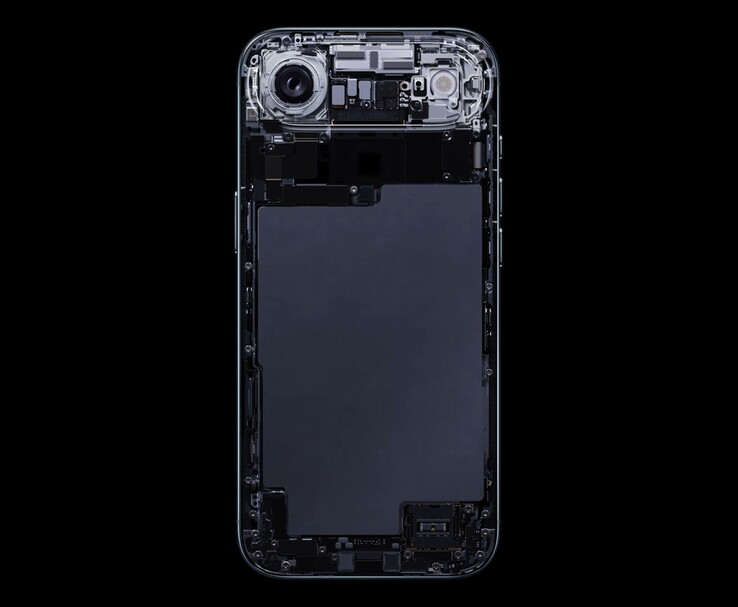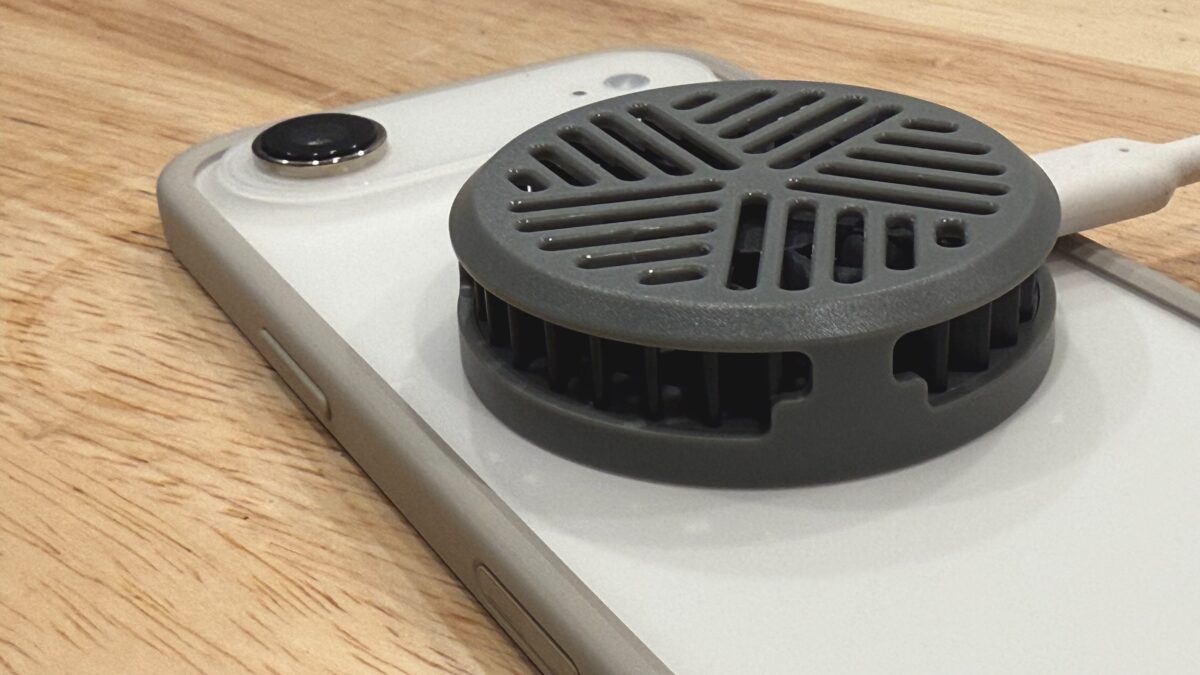A19 Pro in the new iPhone Air: Apple’s Latest Chip Handles Heat Better Than Ever
A19 Pro Performance: How Apple’s Latest Chip Handles Heat Better Than Ever
📖 Reading time: 6-10 minutes
Table of Contents
Shopping for an iPhone 17? Apple’s new A19 Pro chip in the ultra-thin iPhone Air delivers impressive performance while managing heat better than any previous generation. Here’s how it compares to the A16, A17 Pro, and A18 Pro—and why thermal management matters more than raw benchmark scores.
The Evolution of Apple Silicon Thermal Performance
Over the past few generations, Apple has been in an arms race between performance and heat. Each new chip delivers more computational power, but cramming that performance into an increasingly thin smartphone creates thermal challenges that directly impact real-world usage.
A16 Bionic – The Reliable Baseline
The A16 Bionic in the iPhone 15 (non-Pro) and iPhone 14 Pro established a solid foundation. Built on a mature 5nm-class process, it delivered consistent performance without significant thermal throttling. In Geekbench 6, typical scores hover around 2,500 single-core and 6,200-6,500 multi-core.
The A16’s thermal behavior was predictable: modest power draw meant it could sustain performance for extended periods. Even in demanding gaming scenarios, it rarely required aggressive throttling, making it the “tortoise” in Apple’s lineup—steady, reliable, and efficient.
A17 Pro – Power at a Price
The A17 Pro in the iPhone 15 Pro marked Apple’s leap to 3nm manufacturing, delivering significant performance gains (single core 18% gain vs. A16) but introducing notable thermal challenges. Initial Geekbench scores showed modest improvements over the A16—around 2,908 single-core and 7,238 multi-core—but the story was more complex.
The External Cooling Revelation: Chinese reviewer Geekerwan’s testing revealed that the A17 Pro could only reach its highest performance with external cooling. With a cooling fan, scores jumped to approximately 2,999 single-core and 7,779 multi-core—a significant 7-10% improvement in sustained workloads.
Without active cooling, the A17 Pro faced several challenges:
- High power draw: Up to 14W during peak boost phases
- Limited heat dissipation: iPhone 15 Pro could only continuously dissipate ~4W
- Surface temperatures: Reached 48°C during gaming, making devices uncomfortable to hold
- Performance degradation: Multi-core scores dropped ~10% after sustained loads
A18 Pro – Apple’s Thermal Awakening
Recognizing the A17 Pro’s thermal limitations, Apple significantly improved the cooling system in the iPhone 16 Pro but performance gains were typically +8 – 9% only. The A18 Pro benefits from enhanced thermal interface materials and improved heat dissipation design, allowing the device to sustain approximately 6W of heat without throttling.
User reports consistently praised the iPhone 16 Pro’s thermal behavior:
- Devices ran “noticeably cooler” than the iPhone 15 Pro
- Extended gaming sessions became more comfortable
- Performance remained more consistent over time
- External cooling provided only marginal improvements
A19 Pro: Setting New Standards in the iPhone Air
We received our 256 GB iPhone Air the morning of launch day on Friday Sept. 19 and immediately were impressed by how thing and light it is. We immediately installed Geekbench 6 on it and long story short: the A19 Pro in the ultra-thin iPhone Air represents Apple’s mastery of thermal engineering. Despite being housed in thermally restrictive titanium body and inside thinnest iPhone ever, the A19 Pro delivers exceptional sustained performance (+18% over A18 Pro, +51% over A16).
Real-World Testing Results
Our comprehensive testing involved five consecutive Geekbench 6 CPU tests, each taking approximately 4-5 minutes—a total of 20-25 minutes of sustained CPU stress. We tested both stock performance and performance with a MagSafe external cooling fan.
| Configuration | Initial Score (Single/Multi) | Final Score (Single/Multi) | Performance Change |
|---|---|---|---|
| Stock iPhone Air (A19 Pro) | 3,783 / 9,576 | 3,712 / 9,410 | -1.9% / -1.7% |
| With MagSafe Cooling Fan | 3,861 / 9,805 | 3,917 / 9,948 | +1.4% / +1.5% |
Understanding the Cooling Dynamics
An interesting aspect of testing the iPhone Air with external cooling is the device’s unique internal layout.

The A19 Pro system board is housed within what Apple calls the “plateau”—the raised camera bump area—while the MagSafe cooler attaches over the main body where the battery resides. This means our external cooling fan isn’t directly positioned over the SoC itself. Also, even though this test doesn’t cover the GPU, we want to note the A19 Pro variant in the iPhone Air has one less core (total of five) than the Pro’s (Max) model’s six GPU cores.
Despite this indirect cooling approach, the MagSafe fan still provides measurable benefits by:
- Reducing overall device temperature: Cooling the battery area helps lower ambient heat
- Improving heat dissipation pathways: Better thermal gradient across the entire device
- Preventing heat soak: Stops accumulated heat from affecting sustained performance

The cooler we used: Hagibis Magnetic Cell Phone Cooler Ultrathin Cooling Fan Portable Lightweight Mobile Phone Radiator
This explains why the cooling benefits, while real, are more modest than what we might expect from non-direct SoC cooling. The 1.4-1.5% performance improvement represents effective system-level thermal management rather than aggressive chip-level cooling.
What These Numbers Mean
The A19 Pro’s ~2% performance variation over extended testing represents a remarkable achievement. For context:
- A17 Pro showed 7-10% drops without cooling
- A18 Pro reduced this to 3-5% in most scenarios
- A19 Pro maintains performance within normal test variation (±2%)
The A19 Pro’s impressive thermal performance builds on insights from our previous analysis comparing the A18 Pro to Apple’s M-series chips, where we demonstrated that Apple SoCs were rapidly approaching desktop-class capabilities.
With the A19 Pro now delivering sustained performance that surpasses many laptop processors while maintaining excellent thermal characteristics, the gap between iPhone and Mac performance continues to narrow dramatically.
This convergence suggests that future M-series chips—particularly the upcoming M5—will benefit from the same thermal engineering breakthroughs that make the A19 Pro so efficient, potentially delivering unprecedented performance in fanless MacBook Air designs.
Generational Thermal Comparison
| Chip | Device | Geekbench Single Core | Thermal Throttling (Stock) | External Cooling Benefit | Thermal Rating |
|---|---|---|---|---|---|
| A16 Bionic | iPhone 15, 14 Pro | ~2,500 | Minimal (2-3%) | Small | ★★★★ |
| A17 Pro | iPhone 15 Pro | ~2,950 | Significant (7-10%) | Large (10-15%) | ★★ |
| A18 Pro | iPhone 16 Pro | ~3,200 | Moderate (3-5%) | Moderate | ★★★★ |
| A19 Pro | iPhone Air | ~3,780 | Negligible (~2%) | Minimal | ★★★★★ |
Should You Buy External Cooling for Your iPhone 17 or Air?
With the A19 Pro’s excellent thermal management (even housed in a thermally challenging titanium body of the iPhone Air), external cooling accessories are largely unnecessary for most users. Our testing with the MagSafe cooler was primarily conducted to understand the thermal headroom available in the A19 Pro. For typical users who simply want to use their phone without plugging in external devices, the stock iPhone Air performance is more than adequate.
The MagSafe cooling test revealed that the A19 Pro (at least in the Air) has little additional performance to unlock—the ~1.5% improvement demonstrates that Apple has already optimized the thermal design to extract nearly all available performance from the chip. This is a significant engineering achievement compared to previous generations where external cooling could provide much larger gains.
External Cooling Makes Sense If:
- Professional mobile gaming: Competitive players needing every frame rate advantage
- Extended video recording: 4K ProRes recording in hot environments
- Scientific computing: Running sustained computational workloads
- Hot climate usage: Regular use in temperatures above 35°C (95°F)
Summary & Recommendations
The A19 Pro represents Apple’s thermal engineering pinnacle. Even in the ultra-thin iPhone Air, it maintains consistent performance that rivals actively cooled laptops from just a few years ago.
Key Takeaways:
- Thermal evolution: Each generation has improved, with A19 Pro virtually eliminating throttling concerns
- External cooling unnecessary: For 95% of users, stock performance is excellent
- Sustained performance: A19 Pro can maintain peak performance for extended periods
- Form factor achievement: Delivering this performance in the thinnest iPhone ever is remarkable
Buying Recommendations:
- iPhone 17 Air (A19 Pro): Ideal for users who want peak performance in a premium, ultra-thin design
- Previous generation considerations: iPhone 16 Pro (A18 Pro) offers similar thermal performance at potentially lower cost
- Budget option: iPhone 15 (A16) remains excellent for users not needing absolute peak performance
The Future of Mobile Thermal Management
The A19 Pro’s thermal success suggests Apple has solved the fundamental challenge of mobile computing: how to deliver desktop-class performance in a pocket-sized device. This achievement likely means future iPhones will focus more on efficiency improvements and new features rather than basic thermal management.
For shoppers considering the iPhone 17 series, thermal performance is no longer a significant decision factor. Instead, focus on features, camera capabilities, battery life, and form factor preferences. The A19 Pro ensures that whatever you choose, you’ll get consistent, reliable performance that doesn’t slow down when you need it most.
The A19 Pro’s thermal achievements offer a compelling preview of what Mac enthusiasts can expect from the upcoming M5 SoC, particularly for the fanless MacBook Air lineup that has defined Apple’s thermal engineering philosophy.
Apple’s mastery of thermal management in the ultra-thin iPhone Air—achieving nearly zero throttling while delivering 51% better performance than the A16—suggests the M5 MacBook Air will finally unlock sustained professional-grade performance without requiring active cooling. The consistent 18% single-core generational leaps we’ve seen with A17 Pro and A19 Pro indicate M5 could deliver similar gains while maintaining the silent operation that made the M1 and M2 MacBook Air so revolutionary.
More importantly, the A19 Pro’s ability to sustain peak performance in a severely space-constrained device means M5 MacBook Air models should handle extended professional workloads—video editing, 3D rendering, software compilation—without the thermal throttling that previously forced users to choose between the silent fanless Air and the more powerful fan-equipped MacBook Pro.
For Mac users who’ve been waiting for a fanless laptop that doesn’t compromise on sustained performance, the A19 Pro’s thermal engineering breakthrough suggests the M5 MacBook Air may finally deliver “true” workstation-class capability in Apple’s most elegant form factor.
Update: We had planned to include iPhone 17 Pro Max testing with it’s full A19 Pro (+1 more GPU core) in this comparison, but UPS delivery delays have prevented us from including those results. Stay tuned for our follow-up analysis comparing the A19 Pro’s thermal performance across the iPhone 17 lineup.
Have questions about iPhone 17 performance or thermal management? Share your thoughts and experiences in the comments below.
